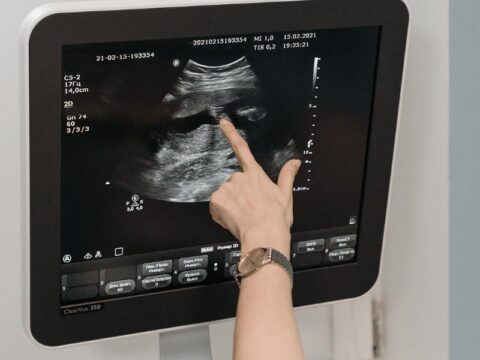Choosing where you will give birth is one of the biggest decisions you will make. Unless you have had a baby before, you might not be aware of your options for pregnancy and labour care.
Where you decide to have your baby can have a significant impact on your entire birth experience. The type of care you have during pregnancy and birth is very important in ensuring you have choice and control over your baby’s birth.
Birth Options In Australia: Public, Private, Birth Centre or Home?
In Australia, although there are several birth options available, first-time mothers are often only given information about the local hospital. It’s up to you to decide whether you might be more comfortable with other alternatives.
If you are still deciding on your place of birth, here are the main choices in Australia.
Public Hospital Care
Most Australian women have their babies in public hospitals. Care in the public system covers pregnancy, birth, and the postnatal period, with care for babies, if needed.
If you live in a city there might be more than one hospital you can book into. Rural and remote areas of Australia have fewer options available.
In public hospitals, if you are low-risk you will be looked after by midwives, with obstetricians available in medical emergencies. Women having a high-risk pregnancy will see one or more of the hospital obstetricians during their pregnancy, and also when they give birth.
In the public hospital system, there are several ways maternity care might be offered to low risk women:
Group practice/caseload midwifery: Throughout your pregnancy, you can be cared for by the same midwife (primary midwife), who is also on call for your birth. The primary midwife is supported by one or two other midwives.
Team midwifery: Your care during pregnancy is shared by a team of midwives (usually 4-6). You aren’t likely to see the same midwife at each visit, but the midwife who is on call when you go into labour will be familiar with you and your pregnancy.
Birth centre: This is a low intervention model of care, which encourages a more home like environment for birth.
Shared care: You may choose to have your GP, who is affiliated with the hospital, to care for you during pregnancy. In hospital, you will be cared for by midwives.
Advantages of public hospital care:
- It’s free and you still receive high quality care
- Intervention rates are lower than those in private care
- Direct access to obstetricians and other specialists, such as anaesthetists and paediatricians, often with around-the-clock availability
- Emergency medical assistance is available if needed
- High level neonatal intensive care units are often available for sick or premature babies
- Linked specialists services such as lactation consultants or post-natal care.
Disadvantages of public hospital care:
- Unless you are in a midwifery program, it’s not always possible to see the same doctor or midwife each visit
- Appointment waiting times can be long
- You have no choice in your care providers during labour, unless you are in a midwifery program
- Access and parking at the hospital might be difficult
- Elective c-section, on maternal request, is not allowed without medical reason
- You are most likely to be in a shared room after birth.
Birth Centres
In Australia, birth centres are currently attached to hospitals and are not free-standing (there is only one private centre, in Tasmania).
Birth centres have a philosophy that birth is a natural and normal event in a woman’s life. Centres have a home-like environment and are staffed by teams of midwives. They have strict criteria for eligibility; only low risk women are accepted.
Advantages of birth centres:
- More comfortable and less clinical environment than a hospital
- Midwifery-led care in birth centres is covered by Medicare and is free. Cost of care by a private midwife or doctor in a birth centre may be claimed through a private health insurance fund
- Lower intervention rates with a midwifery model of care
- You will get to know each of the midwives on the team during your pregnancy, and be familiar with the midwife who provides labour support
- They are more likely to have a private bath for water birth during labour
- Partners, birth support people, siblings, and other family members are encouraged
- If you need to transfer to the hospital, it’s usually right next to the birth centre so you won’t have far to go
- Post-natal care is provided (the length of time varies). Follow up post-natal checks might be provided at home or at the public hospital.
Disadvantages of birth centres:
- Restricted to women who are deemed as having a low risk of complications
- They take only a certain number of women, so you need to book in very early in pregnancy
- Birth centres are governed by the policies of the hospital they are attached to. If your situation becomes high risk (during pregnancy or labour) you can’t choose to remain in the birth centre; your care will be transferred to the attached hospital
- If you want a VBAC (vaginal birth after c-section), no birth centres will accept you
- Birth centres generally don’t have the facilities for epidurals, continuous foetal monitoring, induction, augmentation, or c-section. If you need, or request, any of those procedures you will be transferred to the attached hospital
- There are not many birth centres available – even in major cities
Private Hospital Care
In Australia, if you have private health insurance you can choose private obstetric care for pregnancy and birth. This means an obstetrician will look after you during pregnancy and that you will give birth in a private hospital.
Obstetricians are affiliated with certain hospitals, so you can’t choose any hospital and any obstetrician – they need to be affiliated.
You can either choose an obstetrician and then one of the private hospitals they attend (usually they are affiliated with 2-3 hospitals), or you can book into a private hospital first and choose from a list of obstetricians who attend that hospital.
If you don’t have private health insurance, you can still attend a private hospital and be under the care of an obstetrician. However, you will need to cover the entire cost yourself, which will amount to many thousands of dollars, and will vary according to what’s needed during the birth and what consumables you use.
Advantages of private hospitals:
- You can choose your own obstetrician
- You will see your obstetrician at every pre-natal appointment
- Appointment waiting times aren’t usually long
- You are more likely to have a private room and/or double bed (depending on demand)
- Your partner can often stay overnight with you
- The accommodation and services might be nicer than those in public care
- Check-ups are held in the obstetrician’s private consulting rooms and not in a hospital waiting room
- Although the obstetrician doesn’t stay with you during your labour (midwives do that), your obstetrician will be present at the birth (unless on holidays, or unable to make it in time) and will visit you in hospital afterwards.
Disadvantages of private hospitals:
- You might find your pre-natal appointments aren’t very long
- You are not likely to know any of the midwives who support you during labour
- Of all birth options, private hospitals have the highest rate of interventions, especially c-sections (some private hospitals have over a 50% c-section rate)
- You will still have additional out-of-pocket costs, which vary from a few hundred to several thousand dollars.
- Most health funds require you to have had cover for at least 12 months (the waiting period) before claiming any obstetric benefits
- Most services that are free to public patients – such as room accommodation, blood tests, ultrasounds, physiotherapists, and anaesthetists – are likely to incur a fee in private hospitals
- If your baby isn’t covered by your health insurance after birth, you might be charged for neonatal care, if it’s necessary.
Home Birth
Only about 2% of women in Australia will choose to give birth in their homes, with the support of a private practice midwife.
Private midwives work in groups, with a back-up midwife, or alone. There are a number of public funded home birth programs available; accessed through public hospitals. These programs are very similar to the birth centre experience, except you are able to remain at home to have your baby.
Your pregnancy, birth, and postnatal care will be provided by your chosen midwife. This is called ‘continuity of care’. Over the course of your pregnancy, you will develop a strong relationship with your midwife, and she will know how best to support you during labour.
Private practice midwives are trained professionals, who focus on birth as a natural and normal process. While they are keen to help you achieve a wonderful home birth, they will refer you to specialist care if complications arise during pregnancy.
During labour they also watch for anything which might signal a transfer to hospital. They have medical supplies and special equipment for resuscitation that can be used at home, if necessary.
If you need to transfer to hospital during the birth, your midwife will come with you. Unless she has clinical practising rights at that hospital, she will transfer your care to the hospital and act as your support person.
This article has everything you need to know about homebirth in Australia : https://www.bellybelly.com.au/birth/homebirth-in-australia/
Advantages of home birth:
- You choose your own care provider throughout pregnancy, birth, and the post-natal period, so you are guaranteed to be in the presence of someone you know, trust, and like, at all stages of your care
- Your pre-natal appointments are often in your own home, and your midwife will usually spend as much time with you as you need
- You form a close bond with your midwife, and her care is very nurturing and holistic (physical and emotional support)
- You can set up your birth space however you like, and labour in an environment that is comfortable and familiar
- You don’t have to leave the comfort of your own home for a trip in the car while having contractions
- If you aren’t eligible for birth centre care, you might find a private midwife who can support you
- You will not give birth in a place which is more prone to infection and designed to care for sick people – a hospital
- Of all birth options, home birth has the lowest rate of intervention
- Your midwife can provide birth education, and assist with post-natal care and breastfeeding
- Partners, siblings, family members, and birth support people are all encouraged to be involved during labour and birth
- Your whole family can be with you all times; there are no visiting hours, or interruptions due to hospital routine
- After the birth, you have an ongoing relationship with your midwife, who will check on you frequently, and provide support, as you need
- You receive support and advice from one person – your own private midwife – rather than several different people (as happens in hospitals)
- Some private health insurance funds will cover part of the cost of a home birth.
Disadvantages of home birth:
- The average cost of hiring a private midwife is between $3,000 and $5,000. Clients of private midwives who are Medicare eligible can receive Medicare rebates on antenatal and post-natal care
- Currently, private midwives cannot attain public indemnity insurance. The government has agreed to an exemption for this insurance until 2019, but private midwives must practise under certain guidelines. This means some women might find it difficult to hire a private midwife – for a VBAC, for example
- Epidural is not available at home, so if you decide you need one, you must transfer to hospital
- You need to be prepared to clean up after the birth
- You might find your doctor or other health professionals will not be very supportive of your choice not to follow a medical model of maternity care
- Family and friends might be unsupportive, or even insensitive, regarding your choice; this can be stressful.
Source: Belly Belly – https://www.bellybelly.com.au/birth/australia-public-private-birth-centre-home/
Author: Sam McCulloch Dip CBEd – Last updated August 4, 2022





